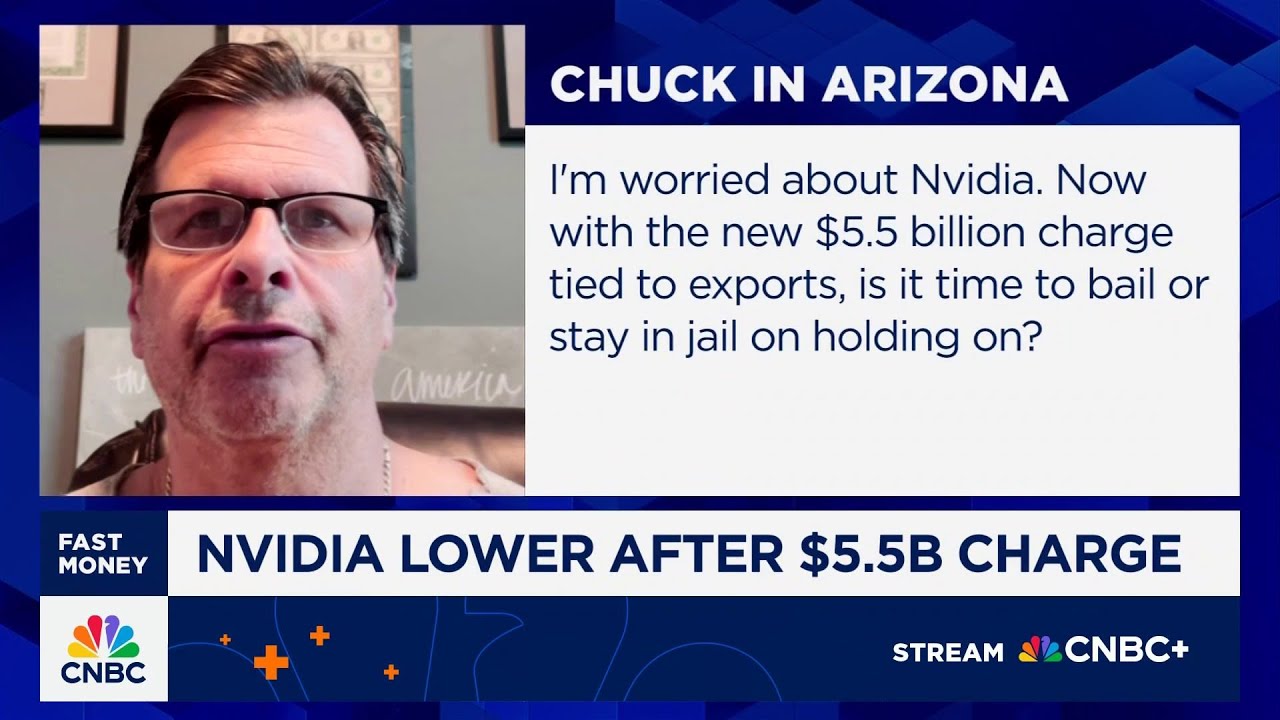In a recent “Fast Money” episode, traders discussed Nvidia’s significant stock decline of 8.5% following a $5.5 billion charge due to export restrictions on AI chips to China, leading to concerns about whether investors should sell or hold. The traders expressed skepticism about Nvidia’s recovery potential, citing inventory issues and reliance on key clients, ultimately recommending that investors reconsider their positions in light of the stock’s recent performance and uncertainties.
In a recent episode of “Fast Money,” traders discussed the current state of Nvidia’s stock, which has seen a significant decline, ending the week down 8.5%. This drop follows Nvidia’s announcement of a $5.5 billion charge related to restrictions on exporting one of its AI chips to China. The traders addressed a viewer question from Chuck in Goodyear, Arizona, who expressed concern about whether it was time to sell or hold onto Nvidia shares amidst these developments.
The traders analyzed Nvidia’s recent performance, noting that the stock had held its August low of $90 but had not shown any significant bounce back. One trader suggested that Nvidia’s trading pattern was poor and recommended pulling out of the stock, indicating a lack of confidence in its recovery. Another trader echoed this sentiment, pointing out that Nvidia’s revenue is heavily reliant on a few key clients, which could lead to further declines if those clients reduce their spending.
Concerns were raised about Nvidia’s inventory issues, particularly regarding $17 billion worth of chips that were intended for the Chinese market but are now at risk due to export bans. This situation could severely impact Nvidia’s expected growth, with one trader predicting a potential 50% drop in sales. The traders emphasized that the stock had previously overshot to the upside and could now overshoot to the downside, suggesting a volatile future for Nvidia.
The discussion highlighted the broader implications of Nvidia’s challenges, particularly in the context of the semiconductor industry and its dependence on international markets. The traders expressed skepticism about Nvidia’s ability to recover in the near term, given the current economic climate and the specific challenges it faces with its client base and inventory.
As the segment concluded, the traders teased upcoming viewer questions, including inquiries about the direction of the ten-year Treasury yield and a challenge related to acronyms. The overall tone of the discussion was cautious, with a clear recommendation for investors to reconsider their positions in Nvidia given the stock’s recent performance and the uncertainties surrounding its future.
